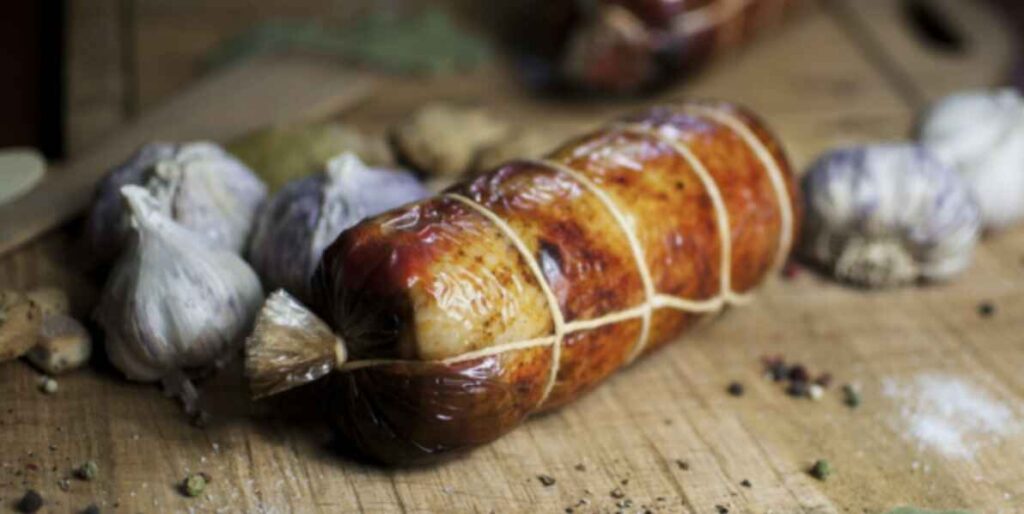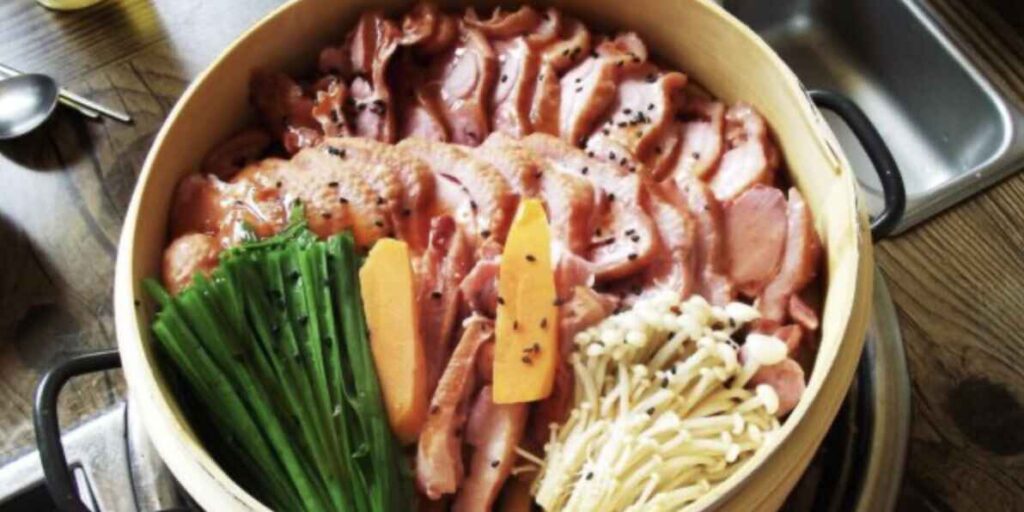Why Smoking Meat Is Popular
Smoking meat has become a beloved cooking technique worldwide, offering a unique combination of flavor, texture, and preservation benefits. The process uses wood smoke to impart rich, smoky aromas and flavors to food, creating a sensory experience that appeals to enthusiasts and gourmets alike.
Table of contents
- Enhances Flavor: The variety of wood types, such as hickory, applewood, and mesquite, offers diverse flavor profiles, allowing customization based on personal preference or regional culinary traditions.
- Tenderizes Meat: Low and slow cooking breaks down connective tissues in the meat, producing a tender, juicy result.
- Versatility: Smoking accommodates a range of meats, including beef, pork, chicken, and even fish, making it an adaptable cooking method.
- Social Activity: Smoking meat often involves communal gatherings, turning the process into a social event and fostering connections around shared meals.
- Cultural Connection: For many, smoking meat is a nod to heritage and tradition, connecting them to culinary practices passed down through generations.
The History and Tradition of Smoking Meat
Smoking meat has deep historical roots, evolving as both a practical method of preservation and a culinary art form.
- Ancient Beginnings: Smoking meat dates back thousands of years when early humans discovered that exposing food to smoke not only extended its shelf life but also added flavor.
- Cultural Practices:
- Indigenous People: Many indigenous communities around the world used smoking as a primary preservation method, particularly in colder climates where drying alone was insufficient.
- Europe: In medieval Europe, smokehouses became a fixture in homes for preserving pork and fish.
- Asia: In countries like China and Japan, smoking techniques were often combined with other methods like curing and fermenting.
- Modern Revival: With advancements in technology and the rise of the foodie culture, smoking has transitioned from a necessity to a culinary craft, celebrated in barbecue competitions and gourmet kitchens.
- Regional Specialties: Different regions have developed distinct smoking styles, such as Texas brisket, Carolina pulled pork, and Scandinavian smoked salmon, showcasing the diversity and creativity in the art of smoking.
Factors to Consider When Choosing the Best Meat to Smoke

Selecting the right meat for smoking is crucial to achieving the desired flavor, texture, and overall culinary success. Key factors to consider include the type of meat, fat content, and flavor profile.
1. Meat Type
- Beef: Popular cuts like brisket and short ribs are ideal for smoking due to their rich flavor and ability to withstand long cooking times.
- Pork: Pork shoulder, ribs, and belly are favorites because they absorb smoke flavors well and develop tender, juicy textures.
- Poultry: Chicken and turkey are excellent choices for quicker smoking sessions, offering mild flavors that pair well with a variety of woods and seasonings.
- Fish and Seafood: Salmon, trout, and shellfish are commonly smoked for their ability to take on delicate smoky notes without overpowering their natural flavors.
2. Fat Content
- Importance of Marbling: Meats with higher fat content, such as pork butt or beef brisket, retain moisture during long smoking sessions, preventing dryness.
- Natural Basting: As fat renders during smoking, it bastes the meat, contributing to tenderness and enhancing the flavor.
- Leaner Cuts: While leaner meats like chicken breasts or venison can be smoked, they may require additional care, such as brining or wrapping, to avoid drying out.
3. Flavor Profile
- Mild vs. Bold: The intensity of the meat’s natural flavor determines the type of wood and seasonings that will complement it.
- Mild Meats (e.g., poultry, fish): Pair well with lighter woods like apple, cherry, or alder.
- Robust Meats (e.g., brisket, pork shoulder): Benefit from stronger woods like hickory, mesquite, or oak.
- Seasoning Compatibility: Choose cuts that work well with the intended seasoning or rubs, whether sweet, spicy, or savory.
- Cultural Influence: Consider regional flavors or traditions to guide the selection, such as using maple wood for Canadian smoked meats or pecan wood for Southern BBQ.
Best Cuts of Meat for Smoking
Beef
- Brisket: A quintessential cut for smoking, brisket is known for its rich, beefy flavor and tender texture when cooked low and slow.
- Ribs: Beef ribs, whether short ribs or back ribs, offer robust flavors and a satisfying, meaty bite.
- Chuck Roast: Often referred to as “poor man’s brisket,” chuck roast is a more affordable option that still delivers great flavor and tenderness.
Pork
- Shoulder (Boston Butt): A forgiving cut that absorbs smoke well, pork shoulder is ideal for making pulled pork.
- Ribs: Both baby back and spare ribs are popular for their balance of meat and fat, offering excellent smoky flavor.
- Belly: Used to make smoked bacon or pork belly burnt ends, this cut is rich and indulgent.
Chicken
- Whole Chicken: Smoking a whole chicken ensures a variety of textures and flavors, with crispy skin and juicy meat.
- Wings: Quick to smoke and perfect for experimenting with rubs and sauces, wings are a crowd favorite.
- Thighs: With higher fat content than breasts, chicken thighs remain juicy and flavorful throughout the smoking process.
Lamb
- Leg of Lamb: This cut offers a hearty and savory flavor profile, making it an excellent choice for smoking.
- Ribs: Lamb ribs are rich and flavorful, benefiting from the addition of smoke for a unique twist on traditional lamb dishes.
Turkey
- Whole Turkey: Smoking a turkey creates a centerpiece with a smoky aroma and moist, flavorful meat.
- Drumsticks: Turkey legs are flavorful and ideal for smoking with bold woods like hickory or mesquite.
Game Meats
- Venison: The lean nature of venison makes it well-suited for smoking with added brines or marinades to maintain moisture.
- Wild Boar: Similar to pork, wild boar has a rich flavor that pairs well with fruity woods like apple or cherry.
- Elk: A lean meat with a delicate flavor, elk benefits from smoking with mild woods like alder or pecan.
Best Meat to Smoke for Beginners
Easy-to-Smoke Cuts for Novices

Pork Shoulder (Boston Butt)
- Why It’s Perfect for First-Timers:
- Extremely forgiving due to its high fat content, which keeps the meat moist during long cooking sessions.
- Absorbs smoke and seasoning well, creating a flavorful result with minimal risk of overcooking.
- Ideal for practicing techniques like maintaining consistent temperature and testing doneness.
Chicken Wings
- Quick and Simple Smokes:
- Require less time than larger cuts, making them perfect for beginners who want to see results quickly.
- Easy to handle and experiment with different seasonings or wood types.
- A smaller size ensures even cooking, reducing the likelihood of mistakes.
Advanced Meat Choices for Experienced Pitmasters
For seasoned pitmasters looking to elevate their craft, mastering intricate cuts and longer smoking times is the key to creating unforgettable barbecue experiences.
Brisket
Mastering the Art of Smoking Brisket
Brisket is the gold standard in the world of barbecue, requiring patience, skill, and a keen sense of timing.
- Preparation: Start with a whole packer brisket, trim excess fat, and apply a generous dry rub at least 12 hours before smoking.
- Smoking Process: Smoke at 225°F (107°C) using hardwoods like oak or hickory. Monitor internal temperature and wrap the brisket in butcher paper or foil (the “Texas Crutch”) when it reaches 165°F (74°C) to retain moisture.
- Resting and Slicing: Let the brisket rest for at least an hour before slicing against the grain to achieve tender, juicy bites.
Whole Turkey
Smoking a Whole Turkey Like a Pro
Smoking a whole turkey requires balancing the cooking time to ensure both the breast and thighs are cooked perfectly.
- Preparation: Brine the turkey for 12–24 hours to lock in moisture and enhance flavor. Apply a light seasoning rub before smoking.
- Smoking Process: Smoke at 275°F (135°C) using fruit woods like apple or cherry. Spatchcocking the turkey can help it cook more evenly.
- Finishing Touches: Baste the turkey with a butter or herb glaze in the last hour for a golden, crispy skin.
Ribs
Smoking Ribs for the Ultimate Flavor
Ribs are a pitmaster’s favorite for showcasing smoky flavor and tender meat.
- Preparation: Remove the membrane from the back of the ribs for better smoke penetration. Apply a sweet and spicy rub, then let the ribs rest for an hour.
- Smoking Process: Smoke at 225°F (107°C) using a 3-2-1 method (three hours unwrapped, two hours wrapped, one hour unwrapped with sauce).
- Presentation: Serve with a glaze of barbecue sauce for sticky, flavorful ribs that fall off the bone.
Seasoning and Marinating Meats for Smoking
Dry Rubs
Popular Ingredients for a Flavor Boost
Dry rubs are a staple in smoking, combining spices and herbs to enhance meat’s natural flavors.
- Common ingredients include salt, black pepper, paprika, garlic powder, onion powder, cayenne pepper, and brown sugar.
- Experiment with regional rubs like Texas-style (simple salt and pepper) or Memphis-style (sweet and spicy).
Wet Marinades
How They Influence Meat Flavor
Marinades are liquids infused with seasonings, used to tenderize and flavor meat before smoking.
- Ingredients often include oil, vinegar, citrus juice, soy sauce, and herbs.
- Use marinades for lean meats like chicken breasts or seafood to add moisture and complexity.
Brining
The Secrets to Juicy Smoked Meat
Brining involves soaking meat in a saltwater solution to retain moisture during smoking.
- Add sugar, herbs, and spices to the brine for extra flavor.
- Ideal for poultry, pork, and game meats, brining prevents dryness and enhances the smoky taste.
The Best Wood for Smoking Different Meats
Fruit Woods
Apple, Cherry, and Peach for a Sweet Smoke
- Apple and cherry woods impart a mild, sweet flavor, perfect for poultry, pork, and seafood.
- Peach wood adds a delicate, fruity aroma to meats like chicken and lamb.
Hardwoods
Oak, Hickory, and Mesquite for Rich, Bold Flavors
- Oak is versatile and works well with beef, lamb, and game meats.
- Hickory delivers a strong, smoky flavor, ideal for pork ribs and bacon.
- Mesquite provides intense, earthy smoke, best suited for robust meats like brisket.
Specialty Woods
Pecan, Alder, and Other Unique Choices
- Pecan offers a nutty flavor that complements pork and poultry.
- Alder is commonly used for seafood, especially salmon, for a subtle smokiness.
How to Smoke Meat: Techniques and Tips
Using a Charcoal Smoker

Basic Setup and Maintenance
- Arrange coals in a “snake method” for consistent heat.
- Add wood chunks for smoke and maintain a steady temperature.
Using an Electric Smoker
Convenience and Control
- Set the desired temperature and let the smoker handle the rest.
- Electric smokers are ideal for beginners or when smoking overnight.
Using a Pellet Grill
Features and Advantages
- Offers precise temperature control with the ease of an electric smoker.
- Pellet grills can smoke, roast, and grill, making them versatile cooking tools.
Smoking Times and Temperature Guide
Beef Smoking Times
Recommended Internal Temperatures
- Brisket: Smoke for 10–16 hours until it reaches 203°F (95°C).
- Beef ribs: Cook for 6–8 hours until tender.
Pork Smoking Times
Key Tips for Tender Pork
- Pork shoulder: Smoke for 10–12 hours until it reaches 195°F (90°C).
- Spare ribs: Smoke for 5–6 hours using the 3-2-1 method.
Poultry Smoking Times
Ensuring Proper Temperature for Chicken
- Whole chicken: Smoke for 3–5 hours at 165°F (74°C) internal temperature.
- Turkey: Smoke for 6–8 hours at 165°F (74°C) in the breast and 175°F (79°C) in the thighs.
Troubleshooting Common Smoking Problems
Over-Smoking Issues
How to Avoid a Bitter Taste
- Use less wood and avoid overloading the smoker.
- Ensure proper ventilation to prevent creosote buildup.
Dry Meat
Preventing Over-Drying While Smoking
- Keep a water pan in the smoker to maintain humidity.
- Wrap the meat during cooking to lock in moisture.
Best Sides to Serve with Smoked Meats
Coleslaw
A Classic Side for Smoked Meats
- Provides a refreshing crunch and creamy tang that balances smoky flavors.
Cornbread
Perfect for a Southern BBQ Feast
- Sweet and moist, cornbread is a comforting side that pairs well with ribs and brisket.
Grilled Vegetables
Adding Freshness to Your Meal
- Smoky grilled vegetables like zucchini, bell peppers, and corn add color and nutrition.
Frequently Asked Questions (FAQs)
What is the best meat for beginners to smoke?
- Pork shoulder and chicken wings are forgiving and flavorful choices.
How long should I smoke beef brisket?
- Brisket typically takes 10–16 hours at 225°F (107°C).
What wood is best for smoking pork?
- Apple and hickory woods complement pork’s sweetness and richness.
Can I smoke meat without a smoker?
- Use a grill or oven with a foil packet of wood chips for similar results.
What temperature should I smoke a turkey?
- Smoke at 275°F (135°C) until the breast reaches 165°F (74°C).
How do I keep smoked meat moist?
- Use a water pan, wrap the meat, and avoid overcooking to retain moisture.

